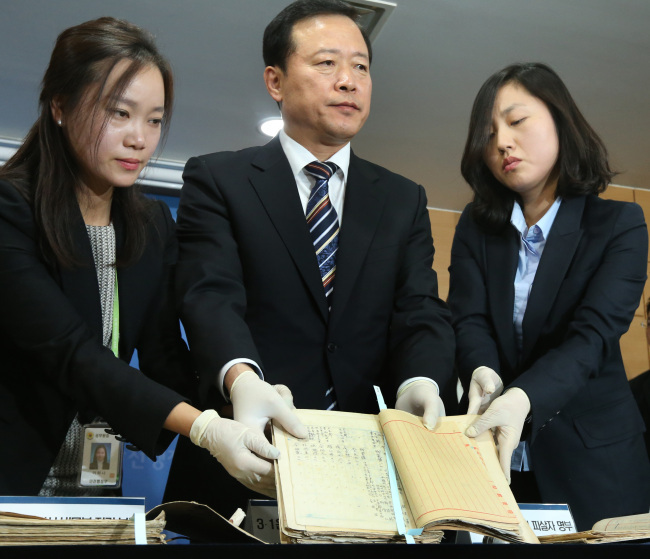Korea unveils new lists of victims of colonial Japan
By Korea HeraldPublished : Nov. 19, 2013 - 20:13

The Seoul government on Tuesday disclosed newly found lists of nearly 230,000 Korean victims of massacre and forced labor during Japan’s 1910-45 colonial rule.
The revelation shed new light on Japan’s past brutalities and is expected to spark further disputes between the two countries over Japanese apologies and compensation.
The National Archives of Korea released the lists of those who were killed during the March 1 independence movement in 1919 and in an alleged massacre by the Japanese after a devastating earthquake in Kanto in 1923, and who were mobilized for forced labor.
The rosters, contained in 65 books, were unearthed in June at the Korean Embassy in Japan during its renovations and then handed over to the National Archives.
The lists were compiled from nationwide surveys which were conducted in 1953 under the direction of then-President Syngman Rhee as part of preparation for bilateral talks with Tokyo that year, officials said.
One of the books lists 630 victims killed during the 1919 nationwide protests, while another identifies 290 Koreans allegedly slaughtered after the Great Kanto Earthquake. The remainder carries the names of 229,781 Koreans forced to work during colonial rule.
Experts said the rosters would serve as crucial historical records when negotiating with Japan for an apology and compensation for the victims.
“The lists are the results of nationwide surveys and carry details such as the victims’ addresses and dates of birth. So they can be used as grounds for compensation,” National Archives chief Park Gyeong-guk told media.
The list of 630 anti-Japan demonstrators contains detailed information such as their names, ages, addresses, places of their deaths and circumstances in which they were slain. Seoul has so far recognized 391 people as participants in the March 1 Movement.
The records of those killed after the massive quake in 1923 also offers details on the victims such as their hometowns and dates of their deaths. Historians’ estimates put the number of the victims at between 6,661 and 20,000, but it is the first time that details of the victims have surfaced.
As for the rosters of forced laborers, officials said that they were the oldest records ever found. The Seoul government has so far kept track of the victims based on its 1957 documents, which list 285,771 victims ― nearly 56,000 more than the newly discovered rosters.
The government plans to use the lists in selecting nationally recognized independence fighters and back up its demands to Japan for recognition of its history. It will piece them together for public display early next year.
By Song Sang-ho (sshluck@heraldcorp.com)
-
Articles by Korea Herald




















![[Today’s K-pop] Le Sserafim garners 100m views with ‘Eve’ music video](http://res.heraldm.com/phpwas/restmb_idxmake.php?idx=642&simg=/content/image/2024/05/24/20240524050572_0.jpg&u=)